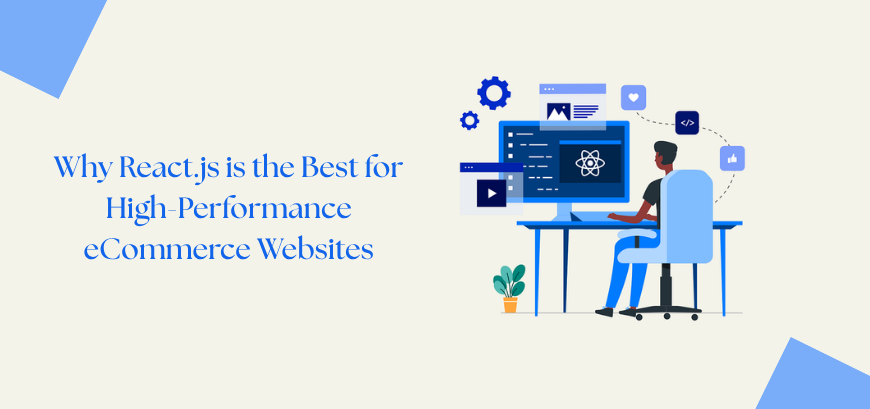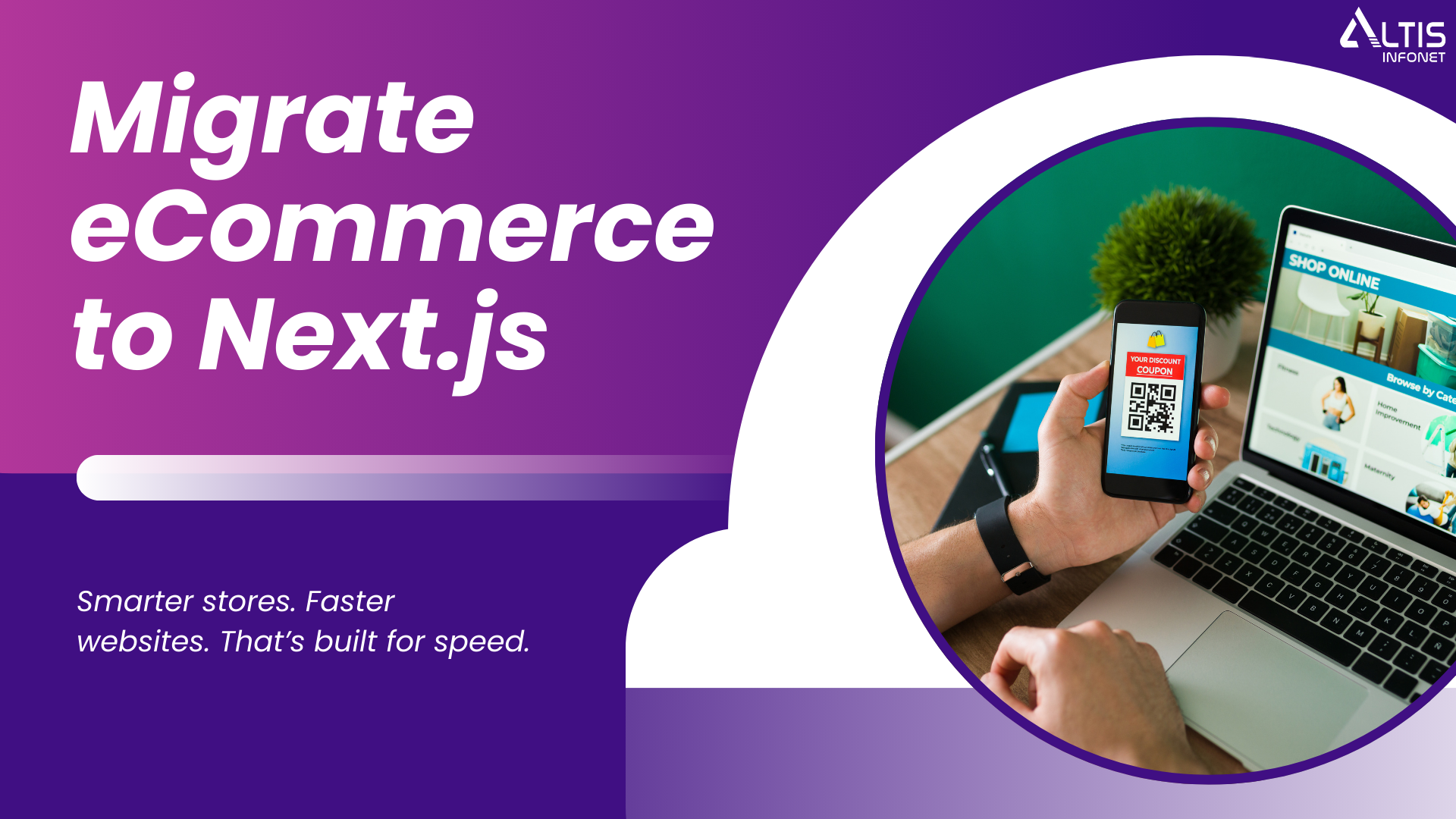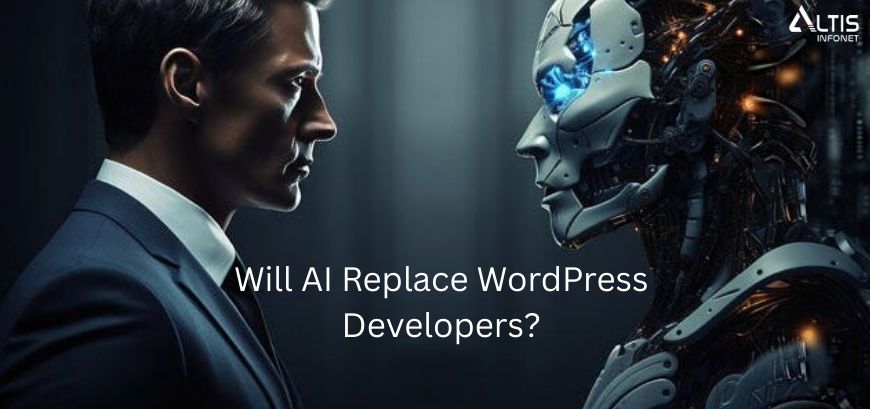The global retail landscape has undergone a seismic shift, with eCommerce becoming the dominant shopping channel for millions. While physical stores continue to play a role, digital storefronts are increasingly becoming the primary revenue drivers for modern businesses. Industry projections indicate the eCommerce market will expand at an impressive 18.9% CAGR between 2024 and 2030, underscoring the critical need for businesses to adopt powerful, scalable web technologies.
In this rapidly evolving digital marketplace, selecting the right framework for your eCommerce platform isn’t just a technical decision—it’s a strategic business imperative. Among the plethora of available options, React.js has distinguished itself as the premier choice for building high-conversion, enterprise-grade online stores.
The Critical Importance of Framework Selection in eCommerce Development
Development Velocity and Time-to-Market Considerations
In today’s hyper-competitive digital economy, speed of execution often determines market success. React.js delivers unparalleled development efficiency through its component-based architecture, enabling teams to reuse pre-built UI elements across the application. This modular approach significantly reduces redundant coding efforts, allowing businesses to launch their stores faster without compromising quality.
The framework’s extensive ecosystem of UI libraries and developer tools further accelerates the development process. Moreover, React’s vast global community ensures that developers have access to immediate solutions for technical challenges, preventing costly project delays.
Performance: The Cornerstone of Digital Commerce Success
Website performance directly impacts conversion rates, bounce rates, and search engine rankings. Unlike traditional frameworks that struggle with complex, dynamic interfaces, React.js utilizes a Virtual DOM implementation that intelligently updates only the modified components of a webpage.
This architectural advantage proves particularly valuable for eCommerce platforms, where real-time updates—such as inventory changes, price adjustments, and cart modifications—must occur instantaneously without full page reloads. The result is a buttery-smooth user experience that keeps shoppers engaged and reduces abandonment rates.
Long-Term Maintainability and Future-Readiness
Building an eCommerce platform isn’t a one-time project—it’s an ongoing commitment requiring continuous updates, security patches, and feature enhancements. React.js shines in this regard due to its backward compatibility and predictable release cycles maintained by Meta (formerly Facebook).
The framework’s declarative nature makes codebases easier to understand, debug, and extend, reducing long-term maintenance costs. Additionally, React’s overwhelming popularity ensures businesses won’t face talent shortages when scaling their development teams.
React.js Features That Revolutionize eCommerce Development
Virtual DOM: The Performance Game-Changer
At the heart of React’s superior performance lies its Virtual DOM implementation. Traditional web applications must re-render entire pages for even minor updates, creating noticeable lag. React’s intelligent diffing algorithm compares the current Virtual DOM with an updated version, calculating the most efficient way to apply changes to the actual DOM.
For eCommerce sites—where elements like shopping carts, product filters, and recommendation widgets update frequently—this optimization translates to instantaneous interface updates without disruptive page refreshes. The result? Higher conversion rates and improved user retention.
Component-Based Architecture for Maximum Reusability
React’s modular design philosophy allows developers to break down complex interfaces into independent, reusable components. An eCommerce product page, for instance, can be decomposed into:
- Product image galleries
- Variant selectors
- Review widgets
- Add-to-cart functionality
This approach delivers three key business advantages:
- Faster development cycles through component reuse
- Easier maintenance with isolated, self-contained functionality
- Consistent UI/UX across all site sections
Server-Side Rendering (SSR) for SEO and Performance
Search engine visibility remains crucial for eCommerce success. Traditional single-page applications (SPAs) often struggle with SEO because search engine crawlers have difficulty indexing JavaScript-rendered content.
React solves this through Next.js integration, enabling server-side rendering that delivers fully rendered HTML to both browsers and search engine crawlers. This hybrid approach combines the interactivity of SPAs with the SEO-friendliness of traditional websites, giving stores the best of both worlds.
Overcoming Common eCommerce Challenges with React.js
Handling Traffic Spikes During Peak Seasons
Flash sales and holiday rushes can cripple poorly optimized stores. React’s efficient rendering pipeline and lightweight virtual DOM updates ensure sites remain responsive even under heavy load. When paired with modern CDN solutions and edge caching, React-powered stores can handle Black Friday-level traffic without performance degradation.
Simplifying Complex State Management
Modern eCommerce platforms must manage intricate state scenarios:
- Multi-step checkouts
- Real-time inventory updates
- Personalized recommendation engines
React’s ecosystem offers robust solutions like Redux and Context API that maintain application state predictably across components. These tools prevent common pitfalls like race conditions and state inconsistency that plague complex web applications.
Enhancing Security in Sensitive Transactions
With payment processing and customer data storage, security can’t be an afterthought. React’s component isolation helps implement fine-grained security controls, while its compatibility with modern authentication protocols (OAuth, JWT) enables secure customer sessions.
The framework’s popularity also means continuous security updates from both Meta and the open-source community, ensuring protection against emerging threats.
Architectural Best Practices for React eCommerce Stores
Implementing Scalable State Management
While React’s built-in state management works for simple applications, large-scale stores require more sophisticated solutions:
- Redux Toolkit for predictable state containers
- React Query for server-state synchronization
- Zustand for lightweight global state
These libraries prevent prop drilling and keep business logic decoupled from UI components.
Optimizing Routing for Seamless Navigation
React Router enables dynamic, client-side routing that feels instantaneous to users. Key implementations include:
- Lazy-loaded routes for faster initial loads
- Protected routes for account-specific pages
- Scroll restoration for better UX in product listings
Advanced Techniques for eCommerce Excellence
AI-Powered Product Discovery
Integrate machine learning models to deliver:
- Semantic search with tools like Algolia
- Personalized recommendations based on browsing history
- Visual search for fashion and home goods
Progressive Web App (PWA) Capabilities
Transform your store into an app-like experience with:
- Offline functionality via service workers
- Push notifications for cart recovery
- Home screen installation prompts
Immersive Product Experiences
Leverage React’s flexibility to create:
- 3D product configurators
- AR-powered “try before you buy”
- Interactive video showcases
Future-Proofing Your eCommerce Business
React.js has proven itself as the framework of choice for businesses serious about eCommerce success. Its performance advantages, developer-friendly architecture, and rich ecosystem provide the foundation stores need to convert visitors, retain customers, and scale effortlessly.
As consumer expectations continue rising and competition intensifies, adopting React.js positions your business at the forefront of digital commerce innovation. Whether launching a new store or modernizing an existing platform, React delivers the technical excellence required to thrive in today’s—and tomorrow’s—eCommerce landscape.
Ready to build a high-performance eCommerce store with React.js? Partner with Altis Infonet’s expert development team to create a cutting-edge digital shopping experience that drives conversions and growth.





